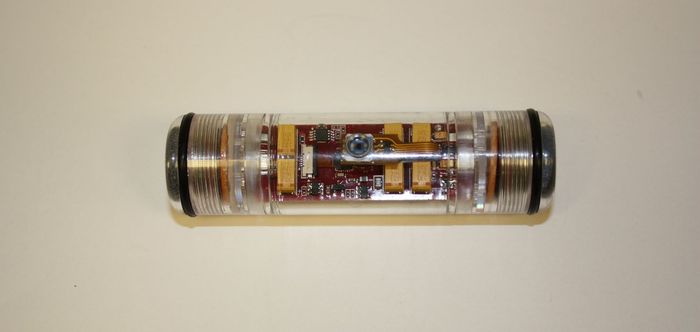Compared with fossil fuels (such as coal, oil) and other power generation, hydroelectric power and perhaps more environmentally friendly, but that does not mean it will have any harm. Demand for seasonal migratory salmon fish, generation of electricity is much needed to the huge dams from water sources can cause problems for fish forced to swim through their turbines. To find the station needed to save the fish downstream of the shuttle method, a team of scientists has designed a plastic shell “sensor fish” in order to measure the pressure of the current from the dam turbines on salmon fish.
Pacific Northwest National Laboratory (PNNL) builds this sensor is mounted in a clear plastic tube (reportedly can cope with up 600 times force of gravity), American Institute of physic conducted a field on two dams in the state of Washington. Such tolerance is necessary to ensure that the experience of the fish being sucked through the dam machines.
The American Physical Society also Review of Scientific Instruments journal released its photograph.
In fact, in the late 1990s, PNNL had to build through the first “Sensor Fish”. But at the time it uses two AA batteries to power, and wearing a transparent layer of the rubber protective vest. They looked like fish, but their sensors capture the experience of swimming in the dams are very basic by the juvenile salmon.
But the old model is difficult to fully capture the variety of data needed to walk through large salmon and other fish, so they launched an upgraded version in 2004.
Although the latest updated of the “Sensor Fish” has been packaged into a transparent plastic tube, but it can withstand twice the conventional pressure and acceleration. Of course, its cost is also becoming more affordable, only $ 1,200 for each device. By comparison, in 2004 the old need $ 5000.
It should be noted that the data of these “fake fish” obtained in this test, the way the future will affect the operation of hydropower stations in the United States.
Many of the country’s current dam were built in the 1970s, but they will soon need to be licensed. In the meantime, authorities will assess the impact of their structure on the environment caused.
If the old hydroelectric turbine will survive and “home” pose a threat to juvenile salmon, that they will have to be replaced with a new design.

